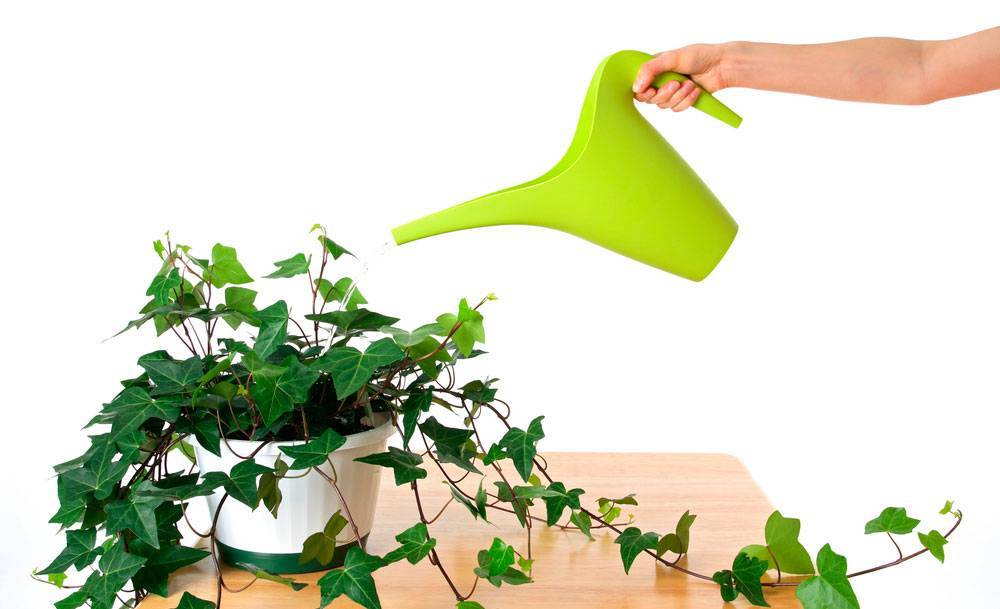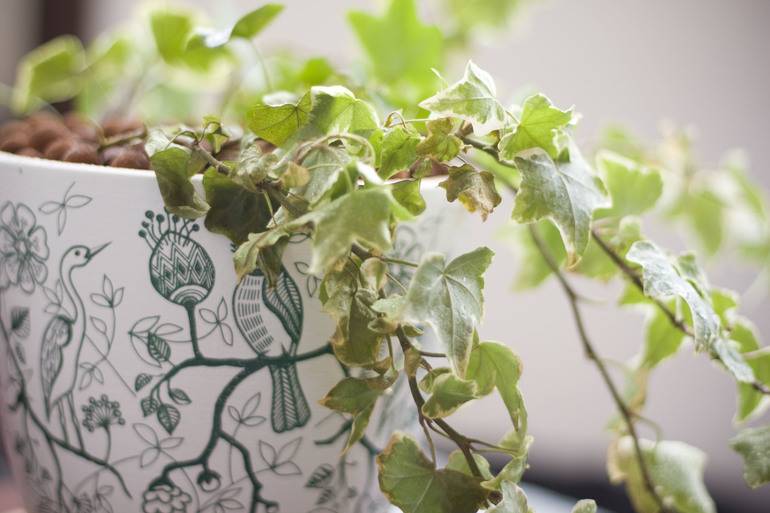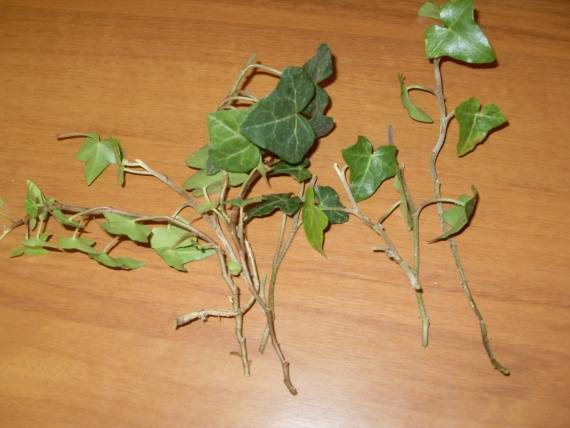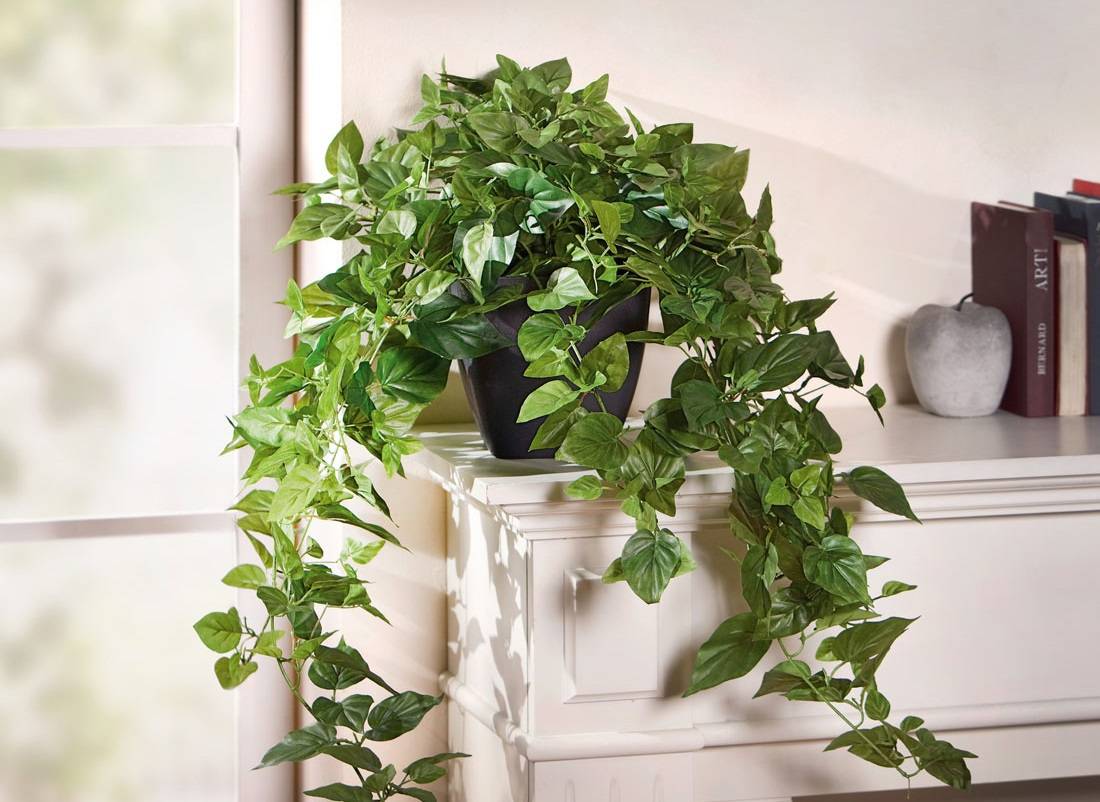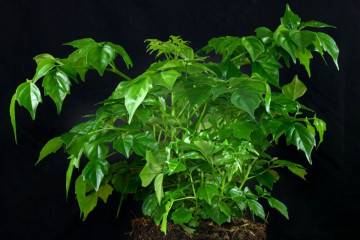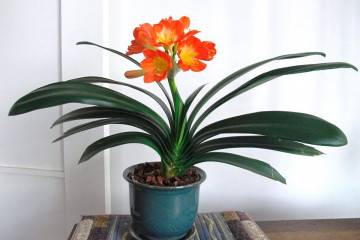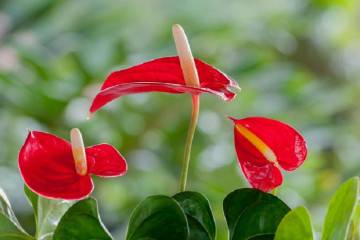Hedera helix mix or common ivy - home care
Content:
Indoor ivy belongs to the Araliev family. This is a rather unusual and beautiful spreading plant, which has a second name - hedera. Ivy is one of the most sought-after indoor ornamental deciduous plants. There are more than 15 types of heders, and they are all very similar in their external description and general characteristics.
Indoor ivy: home care
In order for a healthy and strong heder to grow, care must include timely feeding, watering, control of humidity and temperature indicators.
Ivy, or hedera helix mix: features of keeping at home
Whether it is possible to grow ivy at home, you need to think before buying. There are different types of shrubs, so it is worth choosing those that are more adaptable to indoor conditions. Caring for the hedera helix mix at home first of all requires the creation of optimal conditions of detention and the choice of a suitable place.
Microclimate and proper lighting
As already mentioned, a certain microclimate is necessary for the healthy growth of ivy in an apartment. It is influenced by the following factors:
- temperature regime;
- lighting, that is, the place where you need to put a flower pot for growing;
- humidity in the room.
The Helix mix transfers the permutation of the header very negatively, so the choice of the place should be approached very responsibly.
Site selection, lighting and temperature
Ivy in the house is grown in suspended containers in the form of an ampelous plant, so it needs special support structures. A regular wall will work as well, but it should be away from windows.
Hedera, although it is a shade-tolerant plant, feels more comfortable and develops normally in good lighting. The main decoration of the bush is its shoots in the form of vines, which are stretched out only with sufficient exposure to the sun. But bright lighting also harms the bush, its leaves can begin to dry out. A place with diffused light would be ideal, for example, a balcony on the north side of an apartment or house.
Ivy is one of the few indoor plants that can tolerate temperature changes normally. However, the optimal indicators are 22-25 ° C during active growth and 12-15 ° C during the wintering period.
Watering and humidity
Caring for indoor ivy also consists in abundant, and most importantly, regular watering, because it belongs to moisture-loving plants. In the summer, the soil in the pot must be constantly moist, so watering is carried out at least 2-3 times a week. During wintering, the procedure is carried out every 7 days.
It is very important to keep the soil in the pot in a light air-permeable state, which is difficult with frequent watering. Therefore, do not neglect the manual loosening procedure, which is recommended after each watering. It only needs to be carried out after the water is completely absorbed.
To retain moisture in the soil for a long time and reduce watering, it is necessary to mulch the ground with small pebbles, and when planting on the bottom of the pot, pour any drainage material with a layer of at least 5 cm.
Ivy needs high humidity in the room, at least 60-70%. In the summer, you can periodically bathe the plant under the shower, and in the winter you can spray it with a spray bottle.
Fertilizers and feeding
How to care for ivy so that its growth does not slow down and the leaves begin to turn yellow and dry? First of all, take care of the correct feeding. In March, after wintering, the first fertilization is carried out and this procedure is continued every two weeks with the help of complex mineral preparations until the beginning of autumn.
Experienced gardeners recommend carrying out the first and last feeding with the help of organic fertilizers: humus, mullein solution, rotted manure, compost.
Ivy Care Precautions
Even the most non-capricious plants can have certain problems in growing. Most often this happens due to mistakes in care and the appearance of diseases or pests.
Heder care precautions:
- do not use contaminated substrate or planting material and non-disinfected garden tools;
- do not damage the root system during transplantation;
- do not water with cold and chlorinated tap water;
- do not over-feed the bushes;
- do not raise or lower the temperature of the content above or below the required indicators;
- do not keep ivy indoors with dry air.
How to care for
Proper care of heders helix mix is as follows:
- the required temperature regime is approximately 18 ° С;
- air humidity - from 60 to 70%;
- watering - twice a week in summer, once every 7 days - in winter;
- top dressing - twice a month from March to November;
- diffused lighting;
- the soil must contain sod land, humus, river sand;
- transplant - annually in the first 3 years, then once every three years.
Indoor ivy: diseases and pests
Indoor ivy is distinguished by good health, so it does not get sick with infectious and fungal diseases. However, it can be affected by pests:
- spider mite. It is located on leaf plates and eats its fleshy parts. These are small black insects that weave a thin web. If you periodically conduct a visual inspection of the bush, you can calculate the appearance of these parasites. To combat them, acaricides are used;
- mealybug. It also first affects the leaf plates of the heder. The first signs of its appearance are white bloom and whitish oval specks. If the plant is not treated, the plaque will begin to darken, and the plant will rot. To destroy the worms, in the early stages of infection, it is enough to rinse the bush with soapy water under the shower. At a later date, insecticides are used.
Why do leaves dry
Ornamental deciduous plants often begin to dry out their leaves. Reasons why this might be happening:
- lack or excess of watering;
- lack of nutrients in the soil;
- excessive feeding;
- dry air;
- bad light;
- lack of transplants.
Ivy breeding
Growing ivy from seeds is not that difficult. The process is carried out by planting seedlings, which are then transplanted into separate containers.
In addition to the seed method, others are also used:
- cuttings;
- rooting of layers.
Cuttings can be cut from early spring to mid-summer, and propagated by layering only in spring.
Ivy propagation, depending on the method, is as follows:
- seeds. It is better to plant them at the end of winter. To do this, you need to prepare a nutrient substrate or purchase it ready-made. Pour it into a container for 2/3 of its total volume. Bury each seed 2-3 cm deep and water the soil. Cover the box with foil from above and put it in a lighted place;
- cuttings. Cut several cuttings 14-16 cm long from healthy shoots and remove the lower leaves. Place them in a box with substrate and water thoroughly. Cover the top with a plastic container;
- layering. Place the bush pot on a surface. Place another box with the substrate next to it and dig in the side shoot of the heder. Thoroughly fix the cuttings, leaving its top 10-15 cm on top of the soil. The seedlings should be transplanted after rooting, having previously separated them from the main bush.
Transplant and pruning
Heders are transplanted in the first 2-3 years every spring every year. The plant grows rapidly, the root system also grows. The pot becomes cramped, which is why the bush may slightly lose its decorative effect due to a lack of nutrients. Subsequently, replanting the plant is enough once every 3-4 years.
Indoor ivy is very convenient in growing, its care at home is so simple that even a novice florist can cope with it. The shrub grows in the first 3 years, therefore, it requires special attention during this period. But then a beautiful plant will decorate and refresh the interior in the apartment.


